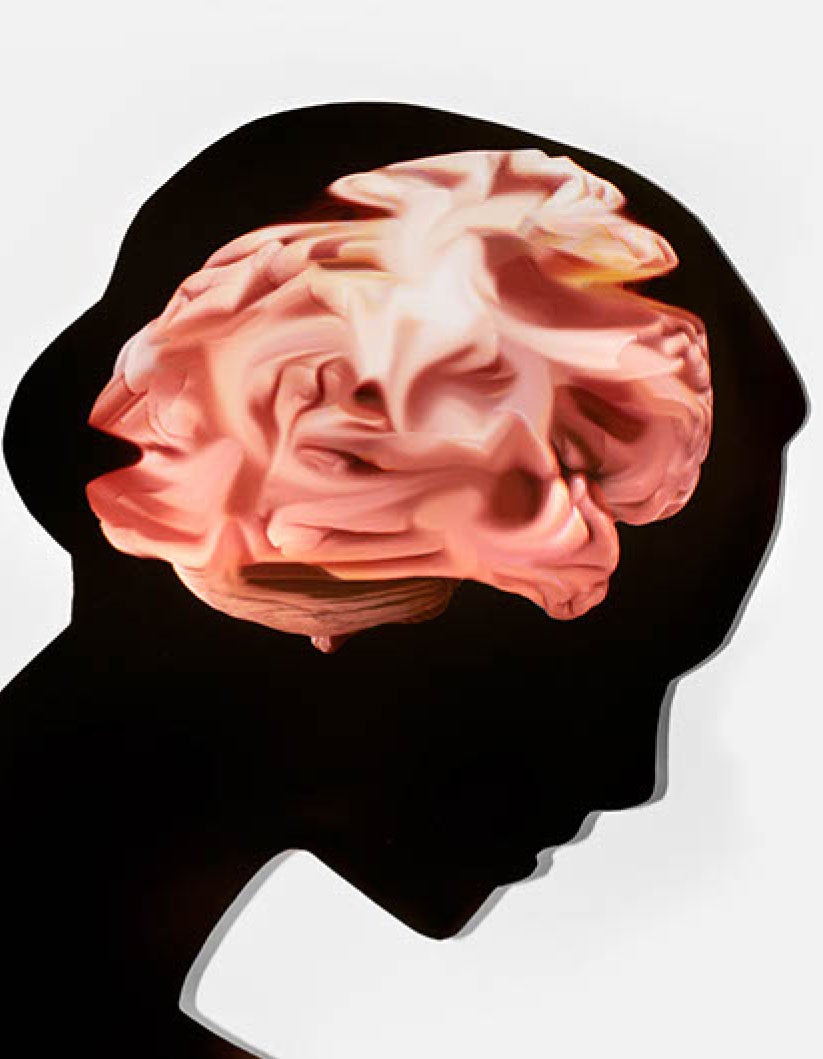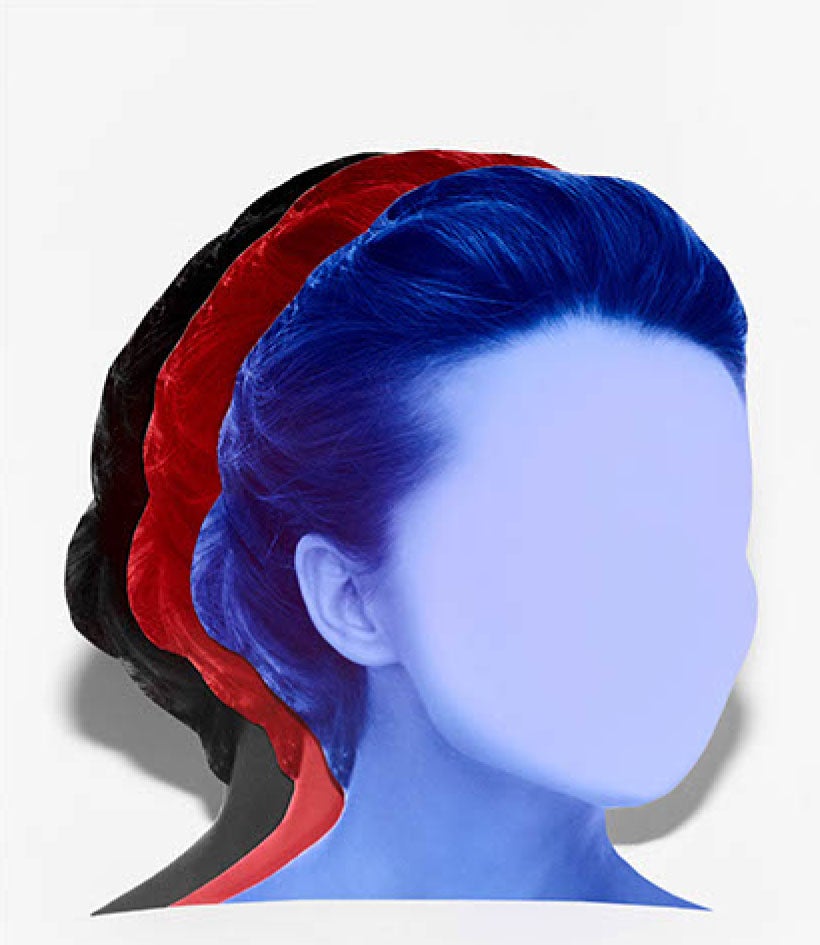Why are we shocked when women commit violent crimes?
By casting women as nurturers, we find it more shocking when they commit violent offences

It’s the visit that we all hope we’ll never experience. The police arrive at your home to tell you that a family member has been murdered. For Marian Partington, 20 years of not knowing what happened to her sister Lucy ended with one such visit on a Saturday morning in March 1994.
Lucy disappeared in December 1973 while waiting for a bus in Cheltenham. She was 21 years old and in her final year of an English degree at the University of Exeter. It was two decades before Lucy was found and the grim truth about her death could emerge. She had been tortured, murdered, dismembered and buried in the cellar of 25 Cromwell Street, Gloucester, along with other victims of the serial killers Fred and Rosemary West.
Fred West took his own life in prison on New Year’s Day 1995. In the November of the same year, Rosemary was convicted of ten murders, including that of her 16-year-old daughter, her eight-year-old stepdaughter and her husband’s pregnant lover. She was sentenced to life in prison without parole.
“Lucy’s death was about sexual exploitation and cruelty,” Marian says. “Her death was tortured and tortuous. But I couldn’t talk about it without facing the horror of what had happened to her. One huge thing was her not having a voice. Lucy was gagged… I felt if I didn’t speak about what had happened, I might as well be dead too.”
Marian works with a secular organisation called the Forgiveness Project and tells her story to male and female prisoners as part of restorative justice work. In 2004 she wrote Rosemary West – who has become a hated figure in the UK – a letter full of compassion and empathy. West responded by asking her not to be in contact again.
Coming to terms with the crime has not been easy. Marian recalls West’s committal. “I don’t use the word corrupt lightly, but I remember sitting and listening to what she had done… and I could feel myself being corrupted.” Work with female offenders, she says, is particularly challenging.
Women are far less likely than men to commit crimes, but rates of female violence reported in the UK have increased. The number of girls and women arrested for violence has more than doubled between 1999/2000 and 2007/08. Whether this reflects an increase in violence per se or in its visibility – or both – is much debated.

The idea of a woman being violent, even murderous, is shocking. But why? Is violence at the hands of women somehow different to that at the hands of men? Regardless, we don’t treat male and female violence the same. Female offenders are often cruelly stereotyped by the media, and they – and their victims – can be poorly served by the criminal justice system.
Female violence is not easy to confront, but a growing number of people are exploring the idea that to rehabilitate women offenders and support their victims better we must move towards a more progressive understanding of what makes a woman harm or kill.
In the past, female power and violence was recognised and even celebrated. Female warriors such as Joan of Arc, Boudicca and the Amazon fighters are iconic. More recently, women in Western and non-Western societies have often taken on leading roles in the military. Women have proved they are capable of deploying violence in ways that seem to demonstrate choice and agency – sometimes in heinous ways. For example, the Nazis trained half a million women for military service, some 3,500 of whom served as concentration camp guards. And in 1997, when I first visited Rwanda, three years after the genocide there, I was struck by how many women had been involved as bystanders, instigators and even key figures in the genocide – just as they had in the Holocaust. The sense of betrayal when women were involved seemed deeper, somehow, because women ‘shouldn’t’ commit such crimes.
Since the 1970s there has been a focus on male violence against girls and women. In many ways that has shifted the framework for characterising violence – particularly intimate and domestic violence – to one that is largely gender-related. This is not surprising – the ‘gender gap’ in recorded crime is well-known. None of this means, however, that female offenders do not exist – and how they are treated has become a major part of criminological research.
The number of women in prison in England and Wales nearly trebled between 1993 and 2005. Although that number is now declining, there are still over 2,000 more women behind bars today than in the 1990s, and women make up around 5 per cent of the prison population. At the end of March 2016, over a quarter of the women sentenced in English or Welsh prisons were there for violence against the person: typically people they knew; often the vulnerable and/or those dependent on their care – children, disabled people, the elderly – and their crimes happened more in private and/or intimate ‘caring’ settings than in public.
Again, women are involved, either as bystanders or leaders, in crimes including ‘honour’-based violence, terrorism and human trafficking. A recent report on ‘honour’-based violence, female genital mutilation and forced marriage by Her Majesty’s Inspectorate of Constabulary concluded that both men and women were perpetrators. And in a recent study published in the Middle East Quarterly – which looked at cases where women were involved in ‘honour’ killings – it found that women were both conspirators and hands-on killers in brutal crimes against other women, even their own relatives, and could also be involved in spreading the gossip that can lead to murder.
There’s more. Baroness Helena Kennedy QC, a leading barrister who led an inquiry into human trafficking in Scotland says that some women in the trade “were cruel and horrible to other women. In many of the instances that came to light, women had become the managerial class.”
Just like a woman
In May 1993, nurse Beverley Allitt, known in the media as the ‘Angel of Death’, was sentenced after being found guilty of murdering four children and harming several others. On 5 May, a UK daily newspaper opined: “Women should nurture, not harm. By and large they do. Even today, violence is a male speciality. But nurses are supposed to be the epitome of female care. They are the angels of newspaper headlines. When women do things like this, it seems unnatural, evil, a perversion of their own biology.”
The paper was summing up what is known as the biological essentialism argument – that women, by nature, are ‘hard-wired’ to care for and nurture, rather than to hurt and kill. Men do, of course, commit more violence than women. But are our brains and bodies, through genes and chemicals, responsible for the crime gender gap? Are women who commit violent crimes therefore doubly deviant and, somehow, not really women?
The idea of there being a typical ‘male’ and ‘female’ brain or character is not backed up by current research. But while male violence is sometimes valorised – in war, for example – or tolerated – as in a pub brawl – it’s rarely the same for women. We either pity the women who commit heinous crimes or try hard to distance ourselves. We do not want to feel any sense of identification. It is too dangerous, even if many of us, if pressed, would admit that we may have on occasion kicked the cat or even smacked our own child. It is almost impossible to imagine such a small, personal act constituting part of a continuum of violence that could lead a woman to kill.

Rather than identify with them, it is easier to class each woman who abuses or kills as exceptional instead. Particular cases are elevated to mythical status, and those who perpetrate them are pitied or vilified, rather than understood. The image created by female offenders can be more powerful, because it is seen as transgressive of gender. It leaves a longer-lasting impression.
Another way to deny female violence is to argue that women act only under the influence of evil men. All too often, women offenders are characterised as “mad” (and so to be pitied, rather than blamed), “bad” (set aside from women as a whole) or “sad” (forced into violence by pressure of circumstance, in retaliation or by coercion).
Typically, a woman who is violent will have her sexuality portrayed as deviant, and her sexual attractiveness examined. Her role as a woman will also be scrutinised – is she a bad wife, or a bad mother? We need to keep the very essence of womanhood separate from, and untainted by, women who kill.
Intimacy and crime
Home is meant to be where we feel safe, somewhere we’re looked after and nurtured, so violence that occurs there, or in other places where people are cared for, seems the most shocking. The traditional focus on male violence in intimate relationships is understandable, as men are more often the perpetrators, and women are more likely to suffer serious injury or die. However, men are not always the offenders, and women not always the victims.
According to the Crime Survey for England and Wales, in 2014/15, 27 per cent of women and 13 per cent of men had experienced any type of domestic abuse since the age of 16, equivalent to an estimated 4.5 million female victims and 2.2 million male victims. Same-sex relationships are no less violent than heterosexual ones. A 2013 study by the US Centres for Disease Control and Prevention found that 44 per cent of lesbians had been physically assaulted by a partner, compared to 35 per cent of straight women. Bisexual women were even more likely to be targeted.
Women are overrepresented as perpetrators of hate crimes against disabled people. The latest data from the Crown Prosecution Service shows that women are defendants in nearly one-quarter of such crimes, compared to 15 per cent of other hate crimes. This pattern is mirrored in crimes against older people, in which just over one-fifth of defendants are women (although many of the reported crimes are not violent).
And the much-cherished role of mother, key to the identity of so many women, can’t be ignored, especially when it becomes distorted – for example in cases of sexual abuse.
Estimates by charities working with perpetrators and victims of child abuse vary, but according to ChildLine, a UK charity for children, 17 per cent of its calls from children reporting sexual abuse are about women. And the Lucy Faithfull Foundation, which works to safeguard children and young people from sexual abuse, estimates that women are responsible for somewhere between 10 and 20 per cent of all sexual offences against children.
In the UK, in 2014/15 (as in other years), the age group with the highest rate of homicide was children under one – they accounted for 5 per cent of homicide victims but only 1 per cent of the population. The majority of children murdered are killed by a parent or step-parent, with mothers responsible for a large proportion of the murders of very young infants. Mothers are also thought to be responsible for almost all cases of (albeit rare) Munchausen’s syndrome by proxy.
The idealisation of motherhood
Dr Estela Welldon has explored the relationship between mothers and children. This relationship can, at its worst, turn “perverse” and damage children, sometimes irretrievably. Women’s violence, she writes, is directed towards their own bodies or their creations – their children.
“My discovery was about the internal circular motion of perversion. When it happens again and again it gives you a new theoretical framework,” she says. Welldon’s book Mother, Madonna, Whore was banned in one iconic feminist bookstore in north London. Even now, some feminists see her as a traitor to the cause. “I broke new ground and some people do not forgive you for that,” Welldon says, but she stood firm, knowing that her findings came straight out of clinical observations that she felt she could not ignore.
“I began to think and listen: ‘What are they talking about? They hate their child…’ It is important to think, and not to judge.” Welldon’s work has changed clinical practice, and her work at the Portman Clinic in London led the way in treating violent women using intensive psychoanalysis and group therapy.
Psychologist and psychotherapist Anna Motz says that the idealisation of motherhood and the denial of the capacity for female violence can prove a risky mix, particularly for mothers who were damaged themselves at some point. “Women are forced into caring roles,” says Motz, “but can become envious of those for whom they care – vulnerable creatures.” When they have been abused or neglected themselves, she argues, they can re-enact violence on that vulnerable creature, or another who takes that place in their imagination: “a sadistic revenge crime against their own abuser” – in their own minds, at least.
Women who kill or abuse their own child are often trying to annihilate a hated part of themselves, she says, and they see the baby as part of themselves too. In more recent, disturbing work, Motz has started to explore the world of what she calls ‘toxic couples’, where two damaged people come together and create their own family, which gets damaged in turn – most famously seen with serial killer couples such as the Wests.

We view women who kill in domestic settings with horror – except those who are mentally ill, seen as defending themselves against domestic violence, or carrying out so-called ‘mercy killings’ of their children. For individual women, this can result in sympathetic legal treatment, but treatment that removes responsibility from them (and a chance of justice for those affected). Men who kill their young children, even if they are mentally disturbed, are very rarely treated with similar sympathy.
Working towards forgiveness
To what extent, then, has our propensity to excuse some sorts of female violence allowed some women to, quite literally, get away with murder? Well, Myra Hindley is arguably the UK’s number one woman folk devil. One half of the Moors Murderers alongside Ian Brady, Hindley killed five children in the north of England between July 1963 and October 1965. As a young woman, barrister Helena Kennedy QC acted for Myra Hindley when she was put on trial after an abortive prison escape.
Kennedy’s book Eve Was Framed, about the injustices women suffer at the hands of the criminal justice system, remains a key text about women and violence, but she is not starry-eyed about the subject. “The Myra that I was seeing was no longer the Myra that was, the ill-educated girl that was in thrall to a very powerful character and sexually intoxicated by him and wanted to meet his needs,” she says. “But can you hang up your moral responsibility? No. She may not have killed children, but she was an enabler; the children might never have got into cars with a strange man. With a woman there, it changes the whole perception of a situation, it makes it seem safe.”
Kennedy thinks that it was right that Hindley was never released, given that Britain does not have the death penalty, although she sets that judgement in a wider context. “Women are less forgiven,” she says. “We live by two sets of rules: the criminal justice system and the other set of rules.” This other set, she says, encompasses the sense that you have done something that runs counter to the rules of womanhood.
“We expect women to be better than men – there is that unspoken thing – that we are more shocked when women do terrible things. I feel it myself,” she says. Kennedy’s analysis goes some way to explain the sheer hatred of women who do break the taboo.
It is hard to forgive violent women, castigated as they are for offending twice: once for their crimes, once for breaching unwritten essentialist rules. But there are some extraordinary people who are able to do that. As impossible as it might seem, Marian Partington is able to talk about Rosemary West, her sister’s torturer and killer, with empathy. Her journey has also helped the family of the perpetrators to move on. Fred’s brother Douglas has been in touch, as has Anne Marie Davis, Fred’s daughter, who was grievously abused.
Forgiving Rosemary West was no easy task. Marian had to make an effort to “humanise her, rather than to demonise her”. But the cycle of violence that psychologist Anna Motz refers to made sense to Marian. “When I heard that Rosemary West had been seriously sexually abused by her father and brother and abducted at a bus stop at the age of 16… I get that.” She’s not excusing it, but is trying to understand what it was like to grow up in that kind of environment. “Was there any love? Was it just fear? How could you learn to be loving when you don’t have any love?”
Marian Partington’s journey towards forgiveness began on 16 February 1995 when she wrapped her sister Lucy’s bones in the mortuary. She lifted Lucy’s skull and kissed the bone of her brow. She then wrapped it in Lucy’s soft brown blanket and laid a sprig of heather on top. An old friend, Beryl, placed Lucy’s childhood toys Chocka and One-eyed Bunny at each side of her skull, with a posy of primroses. Marian then placed a painted Easter egg in the ring of her pelvic bone.
Somehow, we all have to see female violence more clearly, and with more empathy. We have to address it head-on, however hard, rather than just deflecting and distorting it through the prisms of art, literature and the media. That means doing the difficult stuff, and talking to the women who commit violent acts. “It was so important to acknowledge the place of beauty in the world, despite the horror and the atrocity,” says Marian about putting Lucy’s bones to rest. “What we don’t face gets passed on to the next generation.”
A longer version of this article was first published on mosaicscience.com. It is republished here under a Creative Commons licence
Join our commenting forum
Join thought-provoking conversations, follow other Independent readers and see their replies
Comments
Bookmark popover
Removed from bookmarks